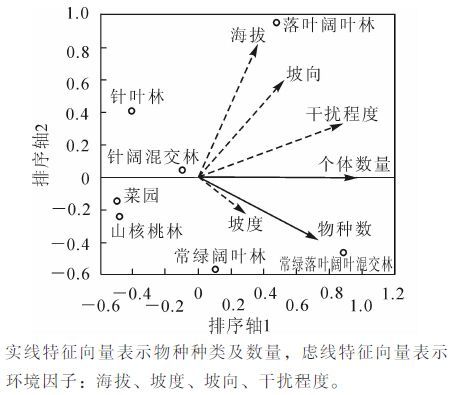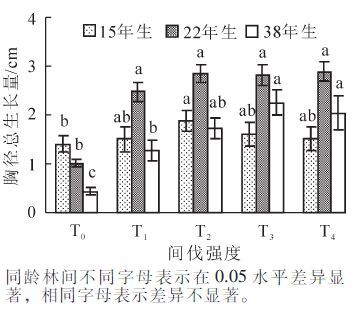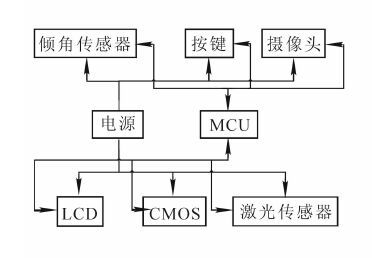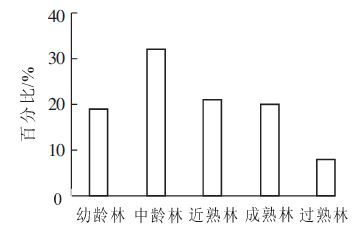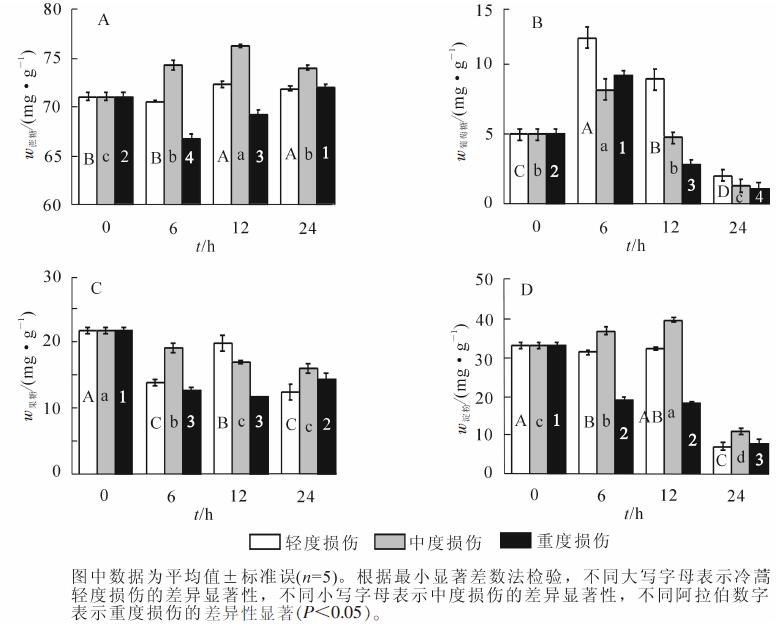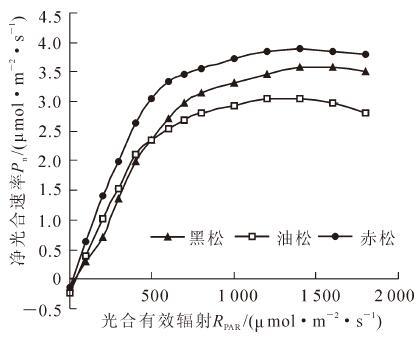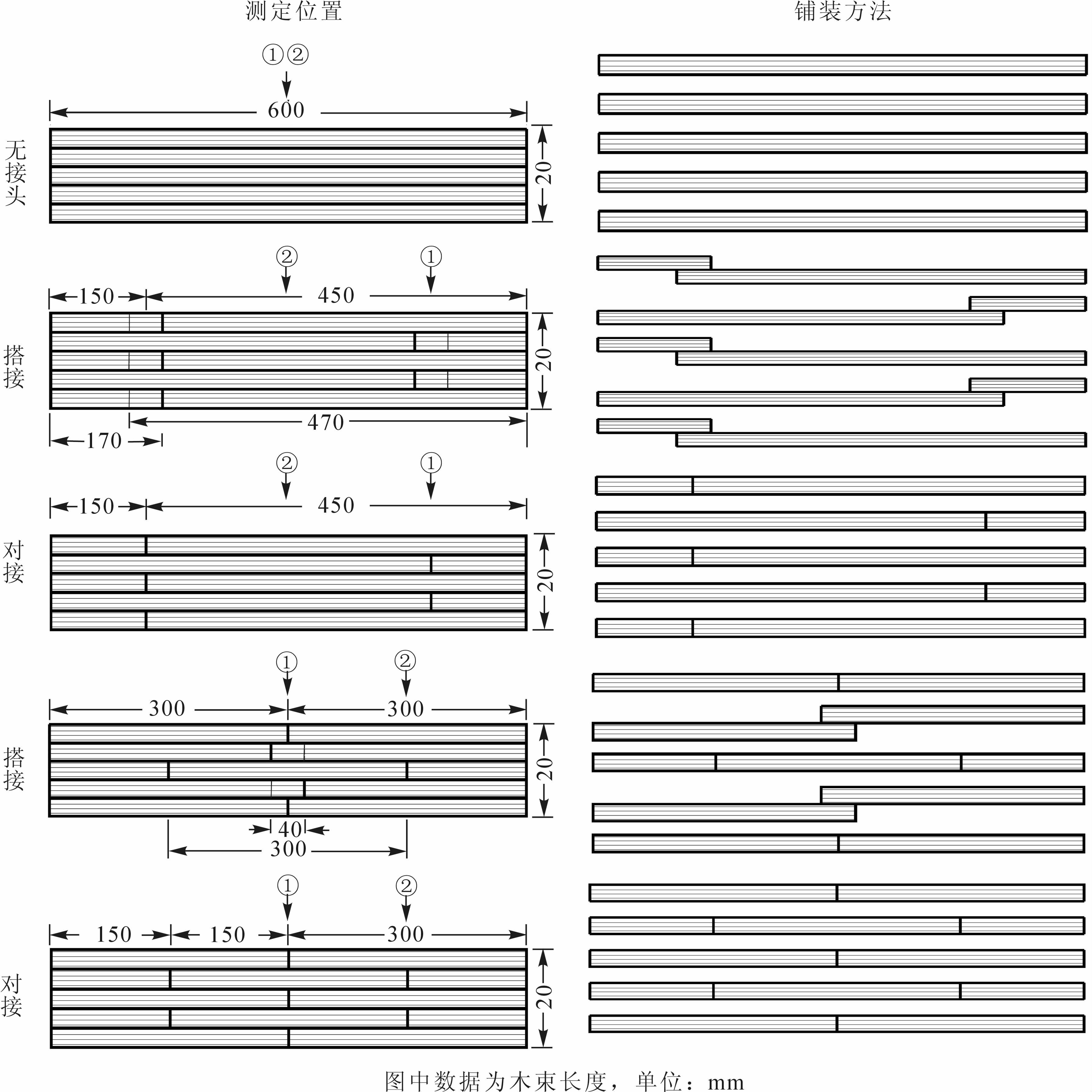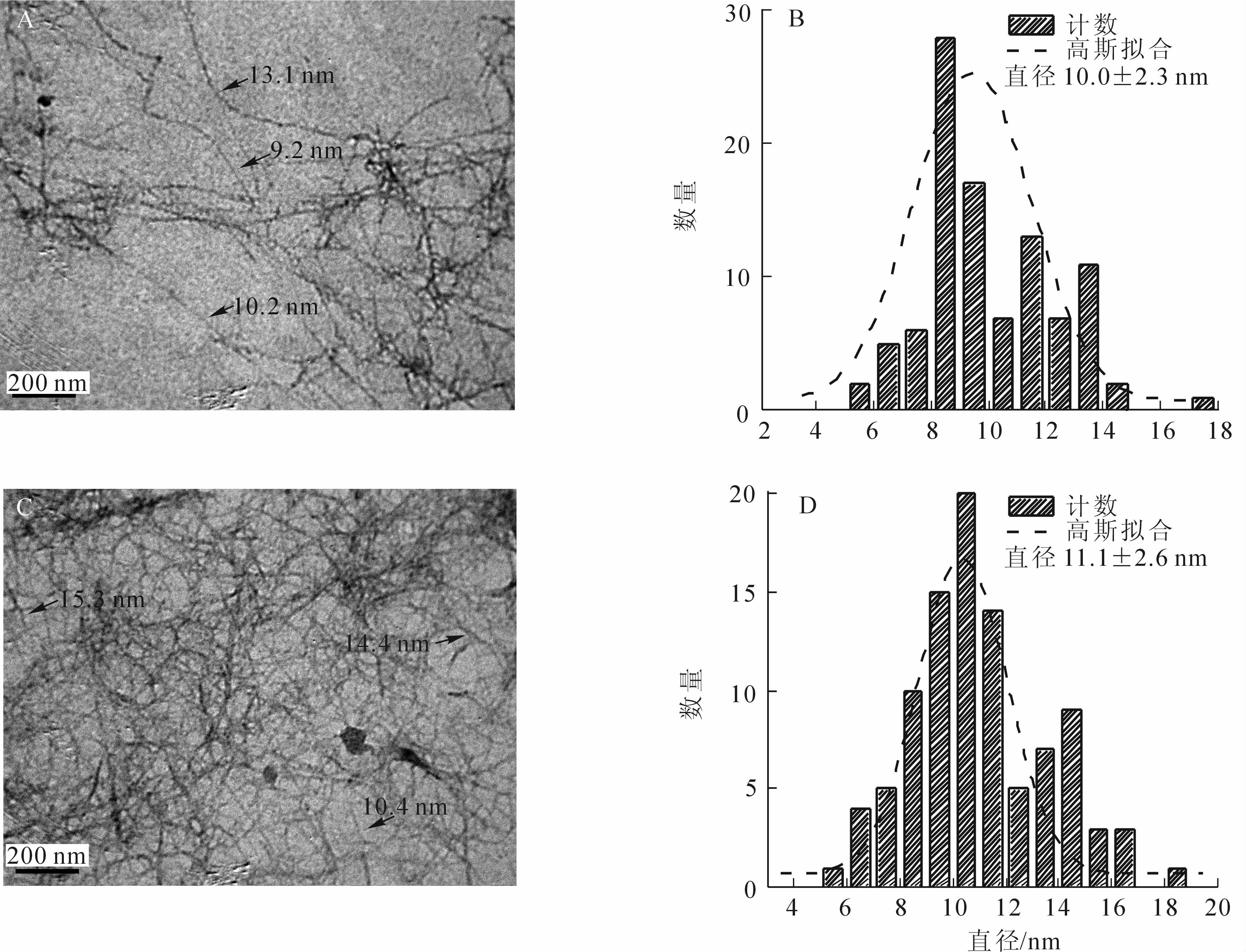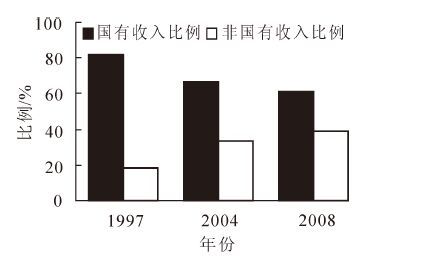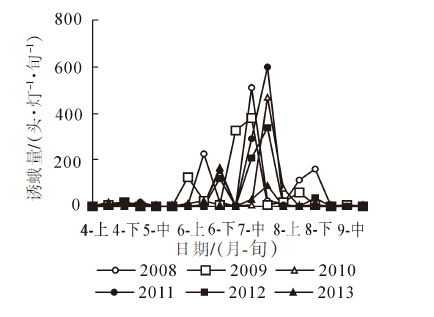2016 Vol. 33, No. 4
To elucidate the relationship between forest ecological environment and insect biodiversity in the Qingliangfeng National Nature Reserve of Zhejiang Province, a systematic investigation on species diversity and diversity variation of carabid beetles was conducted from July to October 2014 using pitfall traps. Carabid beetles were caught from seven types of vegetation habitats, i.e. evergreen and deciduous broadleaf mixed forests (EDB), mixed broadleaf-coniferous forests (MBC), coniferous forests (CON), broadleaf deciduous forests (BD), Carya cathayensis forests (CC), evergreen broadleaf forests (EBL), and gardens (GAR). The Shannon-Wiener diversity index, Pielou evenness index, and Simpson dominance index were used for analysis, and the indicator-value (IndVal) method was used to determine indicator species for different habitats. Finally, a redundancy analysis (RDA) was employed between community structures and biotop factors. Results indicated a total of 658 carabid beetles, belonging to 5 species of 5 genera in Coleoptera with Nebria chinensis and Calosoma maximovicz being the dominant species. The Shannon-Wiener diversity index, Pielou evenness index, and Simpson dominance index revealed more carabid beetles in EBD than in other vegetation habitats. IndVal showed Nebria chinensis as an indicator of EDB while Calosoma maximovicz was an indicator of BD. Redundancy analysis indicated that the slope, aspect, and degree of disturbance were the major reasons for composition differences in the carabid beetle communities of different habitats. The results suggest that different biotope factors influenced the environments where carabid beetles survived, and then influenced the species composition and quantity distribution pattern.
To explore host-plant influence on the Asian long-horned beetle (Anoplophora glabripennis), five different healthy host branches, including Casuarina equisetifolia, Fraxinus chinensis, Salix babylonica, Populus euramevicana ‘I-214’,and Melia azedarach, were used for a composition analysis with an indoor "Y"-tube olfactometer experiment. Host-plant volatiles from the host plants were identified by gas chromatography-mass spectrometry (GC-MS). Comparing with control group, results reflected that the attraction of the five host plants to A. glabripennis were significantly different (P<0.05) with M. azedarach and S. babylonica highly significant (P<0.01). GC-MS results showed differences in chemical fingerprinting. A. glabripennis had the strongest attraction to S. babylonica, M. azedarach, and P. euramevicana ‘I-214’ and were attracted to butyl acetate, nonyl aldehyde, camphene, and alpha pinene that existed in the three host plants. Camphor and 2,4-2 tertiary butyl phenol, a repellent to A. glabripennis, were identified in F. chinensis. A great amount of 1, 3-diethyl acetophenone was found in C. equisetifolia, explaining its poor attraction for A. glabripennis offerring more theoretical basis for study and preparation of attractant and repellent to A. glabripennis.
Population genetic parameters, one of the main constituents of population genetics, and the size of estimated values are influenced by the number of population samples. In this study Betula platyphylla (birch) from Cap Mountain Experimental Forest Farm's Provenance Testing Forest was chosen as the experimental object and sequence related amplified polymorphism(SRAP) technology was used for analysis. Results showed that genetic parameters with different sample sizes had different effects on birch. Genetic variation, population of birch groups, and the percentage of polymorphic numbers within populations influenced genetic parameters. Influence from genetic variation and genetic parameters between groups was strong, but total numbers, polymorphic numbers, and gene flow were not affected. When the sample size was greater than eight, genetic variation amplitude of the birch source was greater than that of the provenances; when the sample size was four, genetic variation was greater than the source of genetic variation among provenances for different samples. For genetic relationships of different provenances with sample size greater than eight, 15 kinds of source clustering results were basically the same. However, with a sample size of four, clustering results did not reflect the evolutionary relationship between birch groups. Also, 11 birch samples were found to have a polymorphic number that was 98.5%.
It was reported that miR3979 might be involved in the responses to arsenite and hydrogen peroxide stresses in rice, but its biological function remains unclear. In this study, using transgenic plants overexpressing miR3979 As21-2 and As21-3, and wild-type (WT) Zhonghua 11 as materials, we investigated its physiological functions in response to arsenite stress in rice. The results showed that, compared with WT, transgenic plants were more sensitive to arsenite, which has a greater arsenic absorption and translocation. Under arsenite stress, the proline and soluble protein contents were significantly increased, while the activity of most of the antioxidant enzymes SOD, POD, APX, and CAT was inhibited extensively in roots of transgenic plants. Furthermore, it was found that miR3979 exhibited distinct gene expression profiles in leaves of WT and transgenic plants after exposure to arsenite. These results may be very significative for further investigation the molecular mechanisms of miR3979-mediated arsenic tolerance in rice, and also providing some useful clues for rice stress resistance breeding.
To promote tree growth, increase timber reserves, and decrease the scarcity of timber forests, this study identified the influence of thinning and pruning on tree growth indexes and provided a technological basis for tree growth through artificial forest tending techniques. For the Saihanba area, treatments of Larix principis-rupprechtii forest types [young forest of 15 years (a), middle-age forest of 22 a, and near-mature forest of 38 a], of effects of different thinning intensities (T0-no thinning, T1-mild thinning-10%, T2-moderate thinning-20%, T3-severe thinning-30%, and T4-extremely severe thinning-35%), and of pruning intensities (P1-no pruning, P2-mild pruning-50%, and P3-severe pruning-66%), on stand growth (DBH, tree height, and volume) were researched. Results were as follows. In the 15 a stand, volume growth (V) increased with an increase in thinning intensity[V(T0) <V(T2) <V(T1) <V(T4) <V(T3)]; and with an increase in pruning intensity[V(P1) <V(P2) <V(P3)]; in the 22 a stand, except for T2, volume growth decreased as thinning intensity increased[V(T0) > V(T1) > V(T3) > V(T4) > V(T2)], decreased with an increase in pruning intensity[V(P1) > V(P2) > V(P3)]; and in the 38 a stand, except for T3, accumulation growth increased with increased thinning intensity,[V(T3) <V(T0) <V(T1) <V(T2) <V(T4)], but with pruning intensity[V(P1) > V(P3) > V(P2)]. For age and thinning intensity, the maximum volume growth for 15 a was V(T4+ P2) (2.10 m3·hm-2), for 22 a was V(T0+ P2) (1.13 m3·hm-2), and for 38 a was V(T4+P3) (0.63 m3·hm-2). This study identified the influence of thinning and pruning on the tree growth, and guide the application of artificial forest tending technique for tree growth.
In a Forest Resource Inventory, a time-consuming job traditionally requiring different instruments in difficult terrain conditions, stand factors are determined to understand the quantity and quality of forest resources, thereby enhancing forest planning, designing and operation. To enable fast and accurate tree measurement, a portable digital intelligent dendrometer was designed and developed. This instrument consisted of a STM32F103VET6 microcontroller, an ov9655 sensor, a LIS331DLTR angle sensor, a keyboard, laser ranging sensors, monitors, a power supply, and the relevant circuit module. Ranging used the phase principle with a ranging accuracy of ±1.5 mm. In the simultaneous measurement mode for diameter and height, the diameter of the tree was automatically identified through image processing with a camera and a complementary metal-oxide-semiconductor (CMOS) sensor. In addition, the following modes were present, caliper, mode, distance measurement, angle measurement and area calculation. Experimental results showed that in the caliper mode, the average DBH error was -0.05 cm, and the error within 0.5 cm accounted for 97.6%. Diameter measurements at different distances and different heights showed that the error fot the optimum distance was within 0.5 cm. Thus, this instrument with automated measurements could meet the needs of a forest resource survey team.
To improve the ecological environment of Taiyue Mountain and develop forest resources to protect the regional environment, this study was conducted based on a profile of the Taiyue area with seven indexes being selected-naturalness, stability, disturbance, diversity, representativeness, area suitability, rarity, and with each index having four levels. Next, a system of evaluation was established on two levels by using the analytic hierarchy process to determine the weight of each index. Then a comprehensive index of the study area was calculated to determine a quality level. Results showed that the index of relative importance of ecological quality area is naturalness. The comprehensive evaluation of 0.90 meant that the current landscape for the study area was high with a Quality Level I and high conservation and research value. Thus, planning recommendations were suggested in the article to help subsequent planning in the study area and to achieve sustainable development.
Forest biomass, the most basic quantitative characteristic of forest ecosystems, is the basis of many forestry and ecological problems. Because of regional differences, measurements for aboveground biomass and the biomass of six components, including stems, branches, crowns, foliage, boles, and bark, often differ. To determine if regional biomass characteristics introduced as dummy variables in one, two, and three variable biomass models effectively improved accuracy and R2 of the models, biomass data from 130 sampled trees of Pinus yunnanensis was determined for total aboveground biomass and biomass of components, including diameter alone; diameter and height; and diameter, height, and canopy width, as independent variables. Then traditional regression was used incorporating geographic areas as characteristics of dummy variables to develop one, two, and three variable biomass models in Xizang and Yunnan. Heteroscedasticity for each biomass model was eliminated with weighted regression. Results of total biomass models showed that the model for total aboveground biomass had the highest predicted precision (P) with 0.9300-0.9600 followed by models for stem, bark, and bole biomass with a precision of 0.9000-0.9500. Predicted precision for the foliage biomass models was relatively low, but it was still greater than 0.8500. The coefficient of determination (R2) and P for the two variable model compared to the one variable model was more greater, but was no differences in three variable biomass models. With the introduced dummy variable, R2 maximum reached 0.7300-0.9600 and P maximum reached 0.8800-0.9600, thereby reducing the standard error and the average prediction error of the estimated value. Therefore, when constructing aboveground biomass models for different regions, the dummy variable model should be used to improve accuracy and generality of the aboveground biomass model, thereby helping to settle incompatibility problems between models of different regions.
A study was performed to understand the seasonal variation of understory herb and its relation to soil factors in a natural broadleaved Korean pine study site. A total of 272 sub-plots(1 m×1 m) were monitored monthly from May to September in 2014. Shannon-Wiener, Simpson, and Gleason diversity indices with evenness (Pielou) and ecological dominance indices were used to explain the seasonal dynamics of herbaceous species diversity. Relationships among herb-layer diversity and soil attributes were studied using redundancy analysis (RDA), forward selection, and Monte Carlo test analysis. Results showed (1) a relatively high herbaceous richness of 91 species belonging to 34 families and 80 genera with Ranunculaceae and Liliaceae family dominating. The phenomenon of single family and single genera was prevalent with single species in a genera accounting for more than 90% of the total, thereby single genera holding an absolute advantage in herbaceous plant of the plot. (2) As the months changed, diversity of the herbaceous species changed peaking in June with diversity indices registering 13.727(Gleason), 0.924(Simpson), and 3.093(Shannon-Wiener). The Pielou index first increased to a maximum in July and then decreased to a minimum in September. Also, the ecological dominance index increased month by month from May to September. Herb species distribution was most uniform in July and most prominent of the dominant species in September. (3) The RDA sorting chart indicated that the first axis mainly reflects the change tendency of the soil total K and pH value,ed. and the second RDA axis reflects the change tendency of soil available P. Thus, soil total K, soil pH, and soil available P were the main soil factors affecting herbaceous diversity. In addition, forward selection and Monte Carlo test analysis showed that herbaceous species diversity was extremely significantly influenced by soil total K and pH(P=0.002).
To determine the effect of grazing and trampling damage of livestock on the metabolism of non-structural carbohydrates in Artemisia frigida, mechanical damage at different degrees (light, moderate, and severe) was applied to simulate grazing. The content of starch, fructose, glucose, and sucrose in leaves and roots were determined. Results showed that in the early stage with light and moderate mechanical damage, sucrose, glucose, and starch content of A. frigida leaves increased significantly (P<0.05). Sucrose content under all the three treatments restored to the level of the control in 24 h; whereas glucose decreased by 60.0%, 74.6%, and 80.1%(P<0.05), respectively, under light, moderate, and high treatments, whereas starch content decreased by 43.4%, 45.2%, and 77.2% (P<0.05), respectively, under light, moderate, and heavy treatments. The variation pattern of non-structural carbohydrates in roots differed that in leaves. At early stage glucose content increased, by 62.9%, 94.3%, and 34.3% (P<0.05), respectively, under light, moderate, and heavy treatments. Fructose content increased significantly at early stage of light treatment. At late stages of three treatments, glucose and fructose contents were restored to the control level; however, sucrose and starch contents decreased with increasing damage. Sucrose and starch were accumulated mainly in roots. Thus, after treatments, the content of starch, sucrose, and glucose in A. frigida changed in response to emergency while mild damage increased the content of non-structural carbohydrates.
To develop and utilize three native garden ground cover plants (Distylium buxifolium, Ternstroemia gymnanthera, and Syzygium grijsii), a water controlling experiment was conducted to measure the physiological responses of soil water conditions to differing soil water contents:suitable soil moisture (field moisture capacity of 75%-80%), mild drought (55%-60%), medium drought (40%-45%), and severe drought (30%-35%). A subordinate function method was used to rank drought-resistance. Results showed that as drought stress increased, the content of leaf relative water and chlorophyll for the three plants decreased rapidly, but membrane permeability and malondialdehyde (MDA) content increased rapidly. The content of free proline, soluble sugar, and soluble protein increased with free proline playing a key role in resisting drought stress. With an increase in drought stress, the superoxide dismutase (SOD), peroxidase (POD), and catalase (CAT) activity of D. buxifolium increased; however, T. gymnanthera and S. grijsii only increased with suitable soil moisture to medium drought conditions, and decreased with severe drought. The subordinate function method ranking drought-resistance was D. buxifolium > T. gymnanthera > S. grijsii. Thus, D. buxifolium could conduct physiological regulation by antioxidant enzyme systems; whereas T. gymnanthera and S. grijsii reached a tolerable limit where the ability to scavenge oxygen free radicals decreased rapidly.
Seedling stage is the most sensitive and vulnerable period of the individual life cycle on the environment. The update, survival and growth of young trees influenced larger by the change of light radiation. This paper focused the study on the change rule of young tree leaf photosynthetic characteristics and chlorophyll fluorescence kinetics characteristics along with the change of light intensity, which were three species, Pinus thunbergii, Pinus tabuliformi, Pinus densiflora. The goal was to investigate the three species' adaptive strategy to different light environments through building shading to mimic the open place, gap, understory(i.e. 0%, 46% and 81% sun-shading) and provide theoretical for natural regeneration and long-term management of plantations in north China. Variables including Pn (net photosynthetic rate), Tr (transpiration rate), EWUE (water use efficiency), Iabs (performance index on absorption basis), Sm (normalized total complementary area above the O-J-I-P transit), ΨO (probability that a trapped exciton moves an electron into the electron transport chain beyond QA-(electron transfer mediators)), ΨRE (probability that a trapped exciton moves an electron into the electron transport chain beyond QB-(electron transfer mediators)), ABS/RC (absorption flux per RC (per QA reducing PSⅡreaction center)), TRo/RC (trapped energy flux per RC), ETo/RC (electron transport flux per RC) had been measured. The results showed that:For the photosynthetic parameters, the photosynthetic parameters of three Pinus trees were significantly different (P<0.05) and Pn was the largest with P. densiflora seedlings. Pn, Tr and EWUE of P. thunbergii decreased with the shading degree increasing; Pn of P. tabuliformis reached maximum under 46% shading degree with Tr and EWUE reaching maximum under 81% shading degree; Pn, Tr and EWUE of P. densiflora showed no obvious differences. For the chlorophyll fluorescence kinetics parameters, the Iabs, Sm, ΨO, ΨRE, ABS/RC, TRo/RC, ETo/RC under different shading degree of the three Pinus trees were significantly different (P<0.05). Iabs, Sm, ΨO, ΨRE, ABS/RC, TRo/RC and ETo/RC of P. thunbergii had the same rule with the photosynthetic parameters; Iabs, ΨO, ΨRE, ABS/RC, TRo/RC and ETo/RC of P. tabuliformis reached maximum under 46% shading degree with Sm reaching maximum under 81% shading degree; The chlorophyll fluorescence kinetics parameters of P. densiflora wasn't significantly different when the shading degree changed (P>0.05). In general, P. densiflora had the strongest ability of using weak light and could adapted to various light environments; P. thunbergii grew well with enough light while P. tabuliformis grew well in light shaded gap.
Cucumis sativus (cucumber) is frequently subjected to salinity in facility production, which seriously affects cucumber yield and quality. To determine the effect of NaCl stress on cucumber, the salt-sensitive cultivar Cucumis sativus ‘Jinyou No. 1’ and relative salt-tolerant cultivar Cucumis sativus ‘Xintai Mici’ were used as experimental materials in this experiment. Seedlings were cultivated hydroponically with superoxide dismutase (SOD), peroxidase (POD), and catalase (CAT) isozyme expression being tested in cucumber seedling leaves, phloem exudates, and roots. Results for the leaves showed nine SOD isozyme bands, four POD isozyme bands, and two CAT isozyme bands being detected. With NaCl stress in ‘Xintai Mici’ leaves, SOD, POD, and CAT isozymes were inhibited, but in ‘Jinyou No. 1’ leaves they were enhanced. In phloem exudates, isozyme bands of three SOD, two POD, and one CAT were detected with NaCl stress enhanced in exudates of ‘Xintai Mici’, but inhibited in ‘Jinyou No. 1’. In roots, isozyme bands from six SOD, seven POD, and one CAT were detected. The CAT isozyme expression in the roots of the two cultivars were enhanced; the six POD isozyme bands in ‘Jinyou No. 1’ were enhanced, and one POD isozyme band was inhibited, but in ‘Xintai Mici’ the expression of all POD isozyme bands was enhanced. With NaCl stress three SOD isozymes were inhibited in both varieties, two SOD isozyme bands were enhanced in the ‘Jinyou No. 1’ and they had no change in ‘Xintai Mici’, and one SOD isozyme band had no change in ‘Jinyou No. 1’ and its expression in the ‘Xintai Mici’ was inhibited. Thus, the three antioxidant enzymes were related to salt tolerance to some extent implying that the antioxidant enzyme response to salt stress possessed variety and tissue specificity; whereas, changes in the three isozymes for phloem exudates were completely opposite in two cultivars suggesting that the phloem was an important tissue in response to salt stress of cucumber seedlings.
To provide a scientific basis for sustainable use of soil and sustainable development of tea plantations, soil organic carbon (SOC), total nitrogen (TN), and total phosphorus (TP) at different ages (2-3, 9-10, and 16-17 years old) were measured in returning farmland to tea with elemental changes in the soil profile of the tea plantations noted. Three tea plantations with different ages located in Zhongfeng Township of Mingshan District were selected as the study plots, and the near cropland was used as contrast. Adopting field investigation and indoor analysis methods, soil samples were collected from 0-10, 10-20, and 20-40 cm depths with SOC, TN, and TP being analyzed and C:N, C:P, and N:P ratios being estimated. ANOVA was performed using the DPS software (7.05). Two-way ANOVA, followed by the least significant difference (LSD) test (P<0.05), was used to compare the sites representing the different tea plantations age and soil layer. Results showed that after returning farmland to tea, SOC content and TN significantly decreased first (P<0.05) and then increased (P<0.05); whereas, changes of TP were relatively stable (P<0.05). In the 0-10 cm soil layer, C:N of returning farmland to tea was significantly higher than the control (P<0.05); whereas C:P and N:P were significantly lower than the control (P<0.05). In the 10-20 cm soil layer, C:N of returning farmland to tea was significantly higher than the control (P<0.05). In the 20-40 cm soil layer, C:N for returning farmland to tea (2-3 years old) was significantly higher than other plots (P<0.05). Also, after returning farmland to tea, the artificial disturbance decreased, which resulted in the degradation of organic matter decomposition rate. Therefore, returning farmland to tea was beneficial to SOC and TN accumulation, improved P efficiency, but limited P on tea plantations which became problematic overtime.
This study was conducted to determine if small diameter Salix discolor branches were a favorable raw material for scrimber. To test, urea-formaldehyde resin(UF) was used indoors. Results showed that when the density was 0.90 g·cm-3, glue consumption was 15%; the optimum treatment parameters of plates manufactured with UF were an initial moisture content of 6%, hot-pressing temperature of 140℃, and hot-pressing time of 20 min. Also, the modulus of static bending strength was 102.04 MPa, internal bonding was 1.99 MPa, and the thickness swelling rate after 2 h of water soaking was 3.8%, which were up to industry standards[Scrimber Floor](LY/T 1984-2011). SEM images also showed that the UF was compressed into an oval hole, but the cell wall itself maintained its integrity and was not crushed. EDAX also showed that the C/O for wooden sticks with diameters ≥10 mm was 0.55, 5-10 mm was 0.60, and ≤5 mm was 0.62. Thus, C/O of S. discolor branches made of scrimber were higher (> 0.55) than C/O of S. discolor branches alone (0.41).
To better use the stalk of Miscanthus floridulus, a species of perennial grass with high cellulose content, a M. floridulus cellulose nanofibril (CNF) was prepared by 2, 2, 6, 6-tetramethylpiperidine 1-oxyl (TEMPO)-mediated oxidation and successively isolated by high pressure homogenization. Analysis consisted of using a transmission electron microscopy (TEM), NaOH conductometric titration, zeta potential, steady and dynamic rheology tests, and the Cox-Merz rule. Results of TEM observations showed that M. floridulus CNF had a fibril structure (10.0±2.3) nm in diameter and several micrometers in length; its surface carboxyl content was 1.98 mmol·g-1 measured by NaOH conductometric titration. Zeta potential results revealed that M. floridulus CNF suspensions were very stable. The steady rheology test found that M. floridulus CNF suspensions performed shear thinning behavior--the higher the CNF content, the higher the viscosity with a stronger shear thinning behavior. The dynamic rheology test showed that M. floridulus CNF suspensions exhibited a storage and loss modulus platform with low frequencies at a content of 0.56%, which indicated a gel structure had formed. Furthermore, the Cox-Merz rule applied in M. floridulus CNF suspensions at low CNF content but did not apply at CNF content of 0.56%. Therefore, the M. floridulus CNF can be prepared successfully by TEMPO-mediated oxidation method, and perform good storage stability. The M. floridulus CNF suspension can form gel at low concentration suggests its potential in thickener and flocculant applications.
With multiple benefits in economy and ecology, product and service of featured economic forest have drawn wide attention from international community. Household's production behavior of featured economic forest (plant selection and scale selection) is significant in promoting forestry industrial restructuring, ecological environment protection and household's increment. Taking featured economic forest-Zhejiang Torreya grandis ‘Merrillii’ as an example, this study applied Heckman's Two-stage Alternative model to analyze household's plant selection and scale selection of Torreya grandis ‘Merrillii’. The results showed that the household's age, education level, average family income and the attitude when increasing the labor input to cultivate affect greatly on their selection and scale of Torreya grandis ‘Merrillii’ cultivation(P<0.05). On the other hand, the household's attitude towards the government's funding policy and the increasing capital investment in cultivation only has significant impact on the their selection of Torreya grandis ‘Merrillii’ cultivation(P<0.05), and no impact has been shown on the cultivation scale. At last, the paper offers some suggestions for the facilitation of Torreya grandis ‘Merrillii’ industry.
Based on the survey data of 1454 households in 24 forestry bureaus of 3 provinces, this research used both MEL and OLS methods to evaluate the impact of the reform on household's per-capita income in the key state-owned forest areas. The study found that the proportion of both non-forestry income and income from non-state-owned sector in households' income was on the rise, which indicated that the households' dependence on the forestry and state-owned sector was declining. In particular, the market-oriented reform, forest management and protection reform had significantly increased households' per-capita income. The reform of both forest enterprise restructuring and permanent settlements of surplus employees had a significant effect on households' income structure. The findings of this paper implied that the performance of current reform would help improve policy design and thus decrease the implementation costs of the further reform in the future.
To solve the obstacles in the implementation of agricultural insurance,we use the legal principle and assist with method of comprehensive analysis in multi subject and think there are a lot of defects in Agricultural Insurance Regulations:Economic intervention of the local government is not clear, intervention is not appropriate; Mutual cooperation insurance and agricultural insurance intermediary organizations have no specific legal norms; Lack of agricultural catastrophe risk disperse mechanism. Finally pointed out detailed rules should be right to further standardize the government intervention in the economy. Introduce Contract method to government intervention. Centered on the fostering social intermediary to build agricultural insurance service system. To establish a fiscal and tax preferential system is the first step of constructing agricultural catastophe risk diversification mechanism.
Reproductive isolation, one of the key processes of speciation and which has ensured a relatively stable genetic system for each species, is fully studied with orchids having the highest biodiversity in flowering plants. Different reproductive isolation mechanisms including prezygotic isolation and postzygotic isolation are introduced and different pollination systems are analyzed. The main mechanism of reproductive isolation for the sexually deceptive orchid is ethological isolation, and for the food deceptive orchid is mechanical isolation and postzygotic isolation. New species can be obtained by artificial cross breeding which breaks the reproductive isolation. Moreover, the relationship between symbiotic germination and reproductive isolation mechanisms in orchids is worth studying in the future.
The root system is the basic unit of soil reinforcement by plants, and the research on the tensile mechanical properties of root system lays the foundation of studies on soil reinforcing effects of plant roots. In slope protection engineering which employs plants, the root system improves the stability of the slope through its shear resistance and tensile resistance. Researches have shown evidence that the tensile strength of root system is one of the most important determinants of enhancing slope stability. Therefore, research on the mechanical properties of root tensile strength is of great significance. Based on the analysis of various studies about the properties of tensile strength of root system by both Chinese and international researchers, this paper not only gives a summary of the current status of these studies but also analyzes and compares the experimental methods employed in these studies, and examines the relationship between various determinants and the tensile performance of root system of plants. Conclusions of this paper are as follows:(1)There has not formed a standardized tensile test for root system yet, and the scientific specifications for methods and devices used in the experimental study on the tensile properties of root system should be implemented; (2) The consensus among studies on the relationship between the diameter of root system and its tensile resistance and tensile strength is that the tensile resistance is in a positive correlation with the diameter of the root system while the tensile strength is in a negative correlation with it; (3)The tensile strength of the root system declines with the passage of time since the plant is uprooted; (4) There have no enough researches on the impacts of length, water content, loading rate, chemical components and micro-structure of root system on its tensile resistance and tensile strength, no consensus conclusion has yet been reached and therefore further researches are needed. Finally, this paper explores the problems and trends of researches on the tensile mechanical properties of root system of plants, and argues that the emphasis of future research will be on the improvement of clamps, structural study on the morphological anatomy of root system and the study on the fatigue failure of root system.
To improve the forecasting and sustained prevention level of Melanographia flexilineata, population dynamics and quantitative characteristics were observed, then a forecast model was established by method of lamplight moth-trapping and a systematic larvae investigation from 2008-2013. Then, based on monitoring data including insect population and weather factors, such as temperature, humidity, and precipitation, a mathematical prediction model for quantity of occurrence and period of the 1st to 3rd generation of M. flexilineata was established using stepwise regression. Results by lamplight moth-trapping showed that the start for overwintering adult trappings was from middle to late April (from April 14th to 29th), but it was relatively late from 2010-2012 in contrast to other years. The peak period and quantity were affected by environmental factors such as climate, which led to peak quantities in 2008 and 2011 but a low ebb in 2013. Population dynamics of the larvae were similar trends with the 2nd generation causing the extremely serious harm; larval peak period occurred in late June but seldom in early July. The fourth-generation quantity of moth and larvae decreased rapidly. Based on the monitoring data collected from 2008 to 2013 including insect quantity and weather factors, the prediction mathematical models of occurrence quantity and period for the pest were established using the method of stepwise regression. Twenty-four factors which had a significant effect (P<0.05 or 0.01) on the regression forecasting model were screened out. Among them, population cardinal number, precipitation, humidity, and temperature were the key factors influencing pest population dynamics. Predicted values agreed well with measured values by inspection and application with the scores which could reflect the historical coincident rate and prediction accuracy of these models being over 99. Thus, this model could accurately predict the quantity and period of occurrence for M. flexilineata. The established prediction technique in this paper was signality to the accurate prediction and scientific prevention of M. flexilineata, which provided scientific basis for supervisors in production.
Forest efficacy of six liquid-formulated trunk-injected pesticides (avermectin, emamectin benzoate, matrine and acetamiprid) were studied using auto flow trunk injection. After 15 months residues from liquid-formulated trunk-injections in pine were recovered and detected using high-performance liquid chromatography (HPLC). Also, positive and quantitative detection of Bursaphelenchus xylophilus (BX) in dead pine trees was studied with a BX Isothermal Amplification Diagnostic Kit. Results showed that the prevention effect from the six liquid-formulated trunk injection pesticides was significant (P<0.05) with one injection controlling pine death rate between 0.4%-4.4% for two consecutive years. Avermectin, emamectin benzoate, and aloperine with trunk-injection slowed the spread of pine wilt disease with a field efficacy above 80%. All liquid-formulated residue concentrations in the trunk xylem were reached except dead pine trees one year after injection the maximum residue concentration was found with emamectin benzoate[having at least (0.15±0.11) mg·kg-1]. Also, after injection all pine trees died due to BX nematodes with an average BX nematode content of at least 897.34 g-1 in the trunk xylem. Thus, because of its favorable effect and long duration of efficacy, this liquid-formulated pesticide injection could be popularized and used in practical control.
Four species and there varieties are reported as new records in Zhejiang Province, which belong to seven genera of six families. They are Chrysosplenium lanuginosum Hook. f. et Thoms. of Saxifragaceae, Symplocos urceolaris Hance of Symplocaceae, Lycianthes lysimachioides (Wall.) Bitter var. sinensis Bitter of Solanaceae,Oplismenus compositus (L.) Beauv. var. formosanus (Honda) S. L.Chen et Y. X. Jin of Poaceae, Cardiocrinum giganteum (Wall.) Makino var. yunnanense (Leichtlin ex Elwes) Stearn and Smilax scobinicaulis C. H. Wright of Liliaceae, Calanthe davidii Franch. of Orchidaceae. Chrysosplenium lanuginosum, Symplocos urceolaris, Oplismenus compositus var. fonnosanus, Cardiocrinum giganteum var. yunnanense and Calanthe davidii are newly recorded species of Eastern China. The voucher specimens were preserved in the herbarium of Zhejiang Museum of Natural History (ZM).




